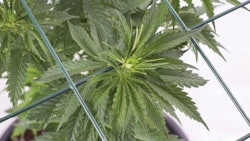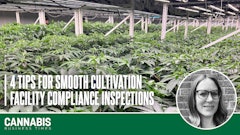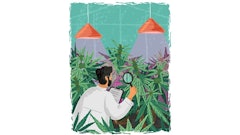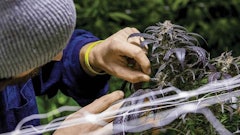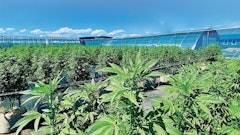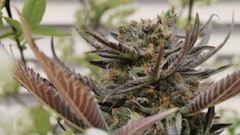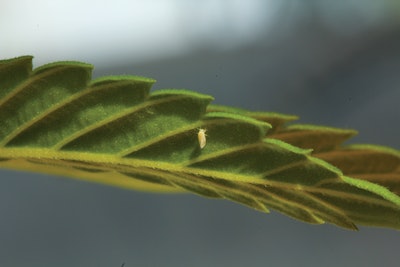
The competitive nature of life on earth could politely be described as intense, with most organisms being exposed to a wide range of threats from many different sources. Bio-based pesticides turn natural weapons and defenses into controls against pests, including diseases. Cannabis growers need to know these controls well and check state rules to see if additional products may be allowed in their state.
While plants cannot run away from threats, they have adapted in unique ways—physically, by turning leaves into thorns to defend themselves, or chemically, by producing organic compounds that allow them to out-compete nearby plants for resources and repel pests. Lower life forms are also constantly in competition. Naturally found soil microbes that help break down organic materials also have pest control effects, and bio-based pesticides leverage these characteristics to offer reasonable levels of control capability.
Bio-Based Products Are Naturally Occurring
Because no one has been able to test pesticides on cannabis during prohibition, no pesticides are labeled for use on cannabis. The pesticides-on-cannabis door was almost shut, except for a small list of pesticides that the EPA has recognized as being non-toxic to humans. These have been endorsed to one degree or another by authorities in most cannabis-legal states. State to state, if pesticides are allowed at all, they will be one of these bio-based or naturally occurring pesticides.
Allowed pesticides are classified as “25b minimum risk,” or Section 3 ingredients under the EPA umbrella law regulating pesticides and fungicides, also called the Federal Insecticide, Fungicide, and Rodenticide Act (FIFRA). Active ingredients in 25b minimal-risk products are basically plant material or plant oils, and do not need to be registered with the EPA. Section 3 active ingredients do need to be registered with the EPA, and they expand the cannabis grower’s toolkit to include auxins, cytokinins, gibberellins, bio-pesticides, copper, petroleum oil, phosphorous acids, pyrethrins, soaps and sulfur.
Finally, growers may request special consideration through FIFRA Section 24(c) registration for Special Local Needs. While not something most growers will attempt, all should be aware that this pathway exists.
Modes of Action
Any pesticide that acts on specific biological processes like nerve centers, gut disruption or the ability to molt is a pesticide that either may cause gene mutations or produce organisms that are resistant to ingredients, which may render them ineffective. These ingredients must be used in a rotation with pesticides of other modes of action to kill off pests that resisted the first treatment. This is intended to ensure nothing with resistant genes survives the rotation.
Active ingredients that can result in resistance are found in mode of action publications created, maintained and published by the Insecticide Resistance Action Committee (IRAC) and Fungicide Resistance Action Committee (FRAC). Pesticides that are on these lists must be used in rotation with other pesticides. The ingredients and their modes of action detailed below were taken from a recent Washington State list of approved pesticides:
1. Pyrethrins target an insect's nervous system. Don’t confuse pyrethrins with pyrethroids, which are synthetic mimics of pyrethrins. While Colorado and Washington allow pyrethrins for use in cannabis cultivation, they are not allowed in California, according to their Department of Pesticide Regulation’s document “Legal Pest Management Practices for Marijuana Growers in California.”
2. Azadirachtin acts as a growth regulator and irritant that can prevent aphids from molting, resulting in death. IRAC lists the mode of action as unknown, but its presence in the IRAC list indicates that researchers believe azadirachtin can produce resistance. Interestingly, sulfur is also noted by IRAC as having an unknown mode of action, but one that is capable of producing resistance.
3. Bacillus thuringiensis (Bt/Bti) is listed by IRAC as effective in disrupting insect digestive systems, which is an action that could result in insects becoming resistant. So when treating media with Bti, be sure to rotate with another ingredient with a different mode of action like pyrethrins or azadirachtin.
The rest of the bio-rational products on the list do not present a threat of resistance because they act on pests externally:
4. Beauveria bassiana is a fungus that attacks and kills insects and mites by drawing nutrients from them. In the same way being eaten ends the life of an insect, there is no way for insects to build a resistance to attack from such agents.
5. Oils' suffocating mode of action is a good example of non-rotational products. They don’t need to be rotated, but they can be used to fill out a rotation. Because oils deprive insects and disease of basic life-giving resources (oxygen), pests and disease don’t build resistance to them. Oils are a tremendous tool in veg, controlling insects, mites and disease all from one spray. Think twice and even experiment with using oil-based pesticides in flower if you are concerned about residual buildup.
6. Minerals like potassium salts and fine clay particles of kaolin all have pesticidal effects, and as naturally sourced minerals, they are considered bio-rational. Potassium salts/soaps dissolve soft-bodied pests, which can be seen by looking through a microscope.
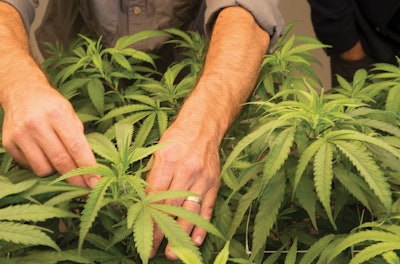
Photo by Jack Hutch
7. Microbes other than Bti that do not hold the threat of resistance build-up are: Bacillus subtilis, Chromobacterium, Streptomyces lydicus, Trichoderma, Isaria fumosorosea and Beauveria bassiana.
8. Additionally, a few active ingredients are derived from natural sources. Piperonyl butoxide, for example, is not a pesticide itself, but it appears to enhance the effects of other pesticides, so it is usually found in products along with other ingredients. Both hydrogen peroxide and peroxyacetic acid are found in nature and have been concentrated synthetically for human use as disinfectants and oxidizing treatment for powdery mildew. Copper octanoate is an example of an inorganic compound that is included under the bio-rational umbrella. Copper is very effective in controlling fungal diseases—but while regulators allow it, we hesitate, knowing it will be ingested. Make your own choice.
9. Plant metabolites also have been made into pesticides like harpin proteins, which are intended to elicit an immune response, heightening disease resistance, while farnesol and nerolidol combined can disrupt mite behavior. Geraniol is a natural compound that acts as a repellent, as does capsaicin (the source of “heat” in peppers). Plant hormones like auxins, cytokinins and gibberellins are allowed in most, if not all cannabis-legal states. Growers are most familiar with IBA (INDOLE-3-BUTYRIC ACID), which is the ingredient in many clone-rooting products, used mainly as growth enhancers.
10. The final ingredient on the Washington list we will note is diatomaceous earth, which consists of the remains of small, hard-shelled creatures that lived in ancient seas whose abrasive qualities provide effective deterrents to media-borne pests.
They Are Still Pesticides
Bio-based does not automatically mean safe. Even though these ingredients are non-toxic to humans (the EPA says so), breathing spray mist or diatomaceous earth dust can affect humans beyond chemical action. Reading the label and following personal protection equipment (PPE)guidelines are still essential practices to ensure neither the product nor its application poses a threat to workers, consumers or plants.
Proper application is everything. Pesticides that harm through contact must contact the pests, and if those pests like to hang underneath leaves, make sure you are spraying there, too. If ingestion is required, apply the pesticide where it will be mixed with the pest’s food sources. Follow the label. (Editor’s note: For more details on mistakes cultivators commonly make with biological products, turn to page 88).
We have been talking about the evidence for powdery mildew and botrytis being triggered by moisture. To cut down on moisture, foggers have long been used in controlled environments. High-pressure, low-volume sprayers (HPLV) also atomize pesticide solutions to ultra-small droplets and issue a mist that coats leaves with the pesticide while using 10 to 40 times less water than normal sprayers. Try them.
A Little Help
The basic tenant of IPM (Integrated Pest Management) is to use every aspect of the cultivation system to control pests, and that is no more applicable than when using the pesticides discussed here. While capable of controlling pests, the labels on these products typically note that the product is best used preventively.
We have had success using intensive preventive scouting, mechanical removal and spot treatments to control powdery mildew and even avoid having to perform a general spray that wets the buds. This requires costly labor to implement, but if done daily and used in conjunction with bio-predators to control insects, you may be able to discontinue general spraying.
Survival is what it is all about, and the fact that the cannabis industry is surviving on this small clutch of ingredients is as good as we can ask for at this time. More cost-efficient pesticides may be made available in the future—but for now, working in a bio-responsible industry makes us feel pretty darned good.










